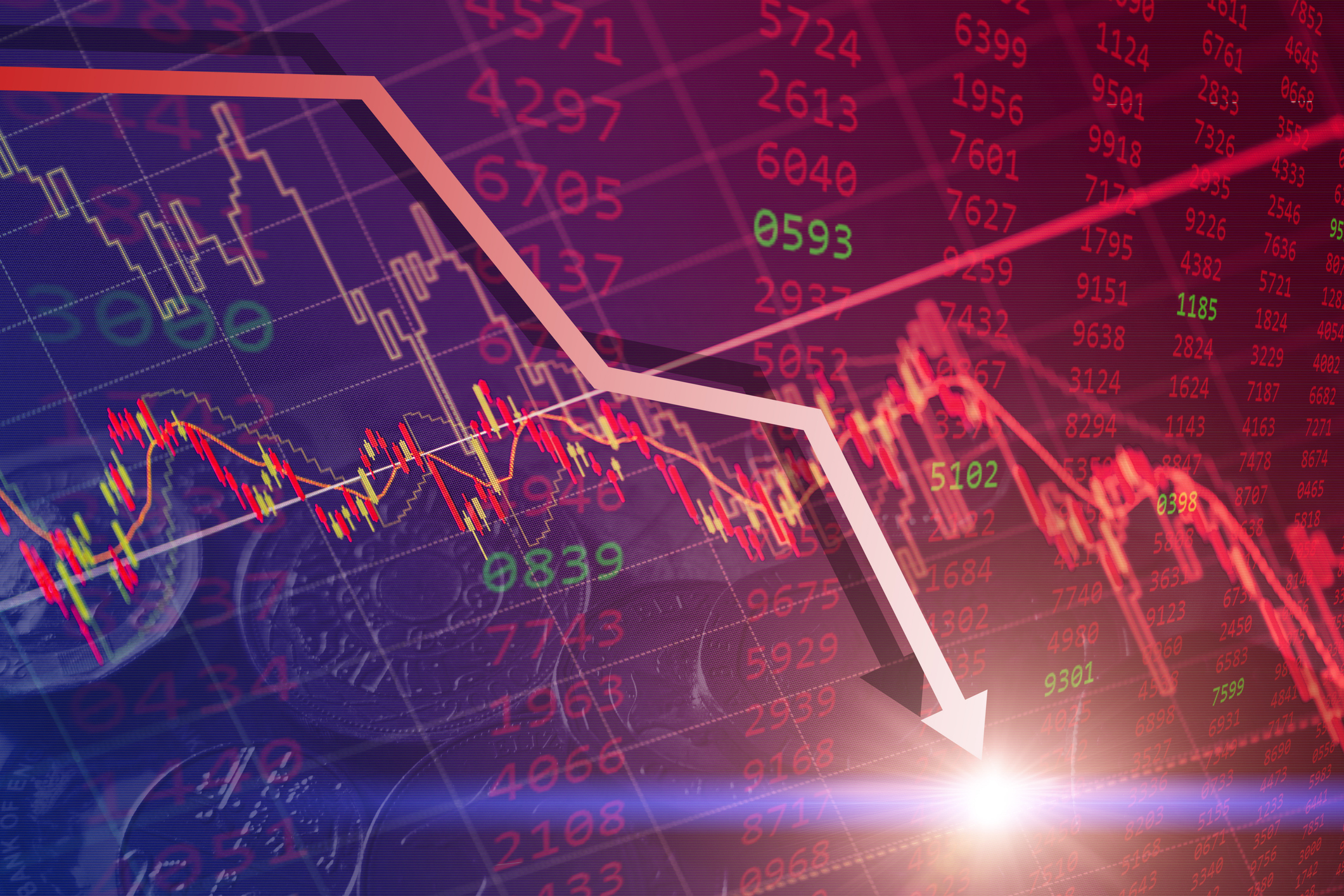The Dangers of Leveraged ETFs
There are plenty, but these funds can have a place in your portfolio.
Leveraged exchange-traded funds bring new meaning to the unfortunate concept of “heads I win, tails you lose.” As the performance of some of these ETFs in 2009 showed, you can bet correctly and still end up losing money -- occasionally, large amounts of it.
Leveraged ETFs -- those that seek to double or triple the returns of an index -- were among last year’s best-performing funds. Some were downright scintillating. But some of these funky funds lost money even though the indexes they purported to track delivered positive returns in 2009.
Assets in these funds grew 36%, to $29.6 billion, in 2009, helped by the launch of 26 leveraged ETFs during the year. Despite the category’s name, these ETFs don’t use leverage -- that is, borrowed money -- to goose the returns of their underlying indexes. Instead, they rely on swaps and derivatives to do the heavy lifting.
From just $107.88 $24.99 for Kiplinger Personal Finance
Become a smarter, better informed investor. Subscribe from just $107.88 $24.99, plus get up to 4 Special Issues

Sign up for Kiplinger’s Free Newsletters
Profit and prosper with the best of expert advice on investing, taxes, retirement, personal finance and more - straight to your e-mail.
Profit and prosper with the best of expert advice - straight to your e-mail.
But that’s not why leveraged ETFs often go astray. The problem is that these funds can guarantee achieving their goals only on a daily basis. Hold these funds over periods longer than a day and the arithmetic of compounding takes over, magnifying losses far beyond what you might expect.
Consider this scenario: Suppose Standard & Poor’s 500-stock index climbs 10% on Monday, then drops 10% on Tuesday. You are not at even money. A $100 investment in an S&P 500 ETF at the market’s open on Monday jumps to $110 by the end of the day, then sinks to $99 by the end of Tuesday. You're out 1% over two days. But if you buy a double-leveraged ETF, your loss is more than double. An investment of $100 soars to $120 after Monday’s 10% gain, then tanks to $96 by the Tuesday close. Double leverage has amplified your two-day loss from 1% to 4%; the loss would be 9% in a tripled-leveraged fund. The math is similar with inverse leveraged ETFs -- those that seek to deliver two or three times the returns of an index in an opposite direction.
This scenario plays out in both bull and bear markets. Volatility and negative compounding mean that investors in leveraged funds will lose money over time, except for the fortunate few who successfully trade in and out of the funds. Take Direxion Daily Financial Bull 3X. Its benchmark, the Russell 1000 Financial Services index, gained 20% in 2009, but the triple-leveraged fund lost 40%.
The Financial Industry Regulatory Authority has wagged its finger at leveraged ETFs. Last June, Finra issued a warning that declared these funds “unsuitable” for most investors. The alert spooked some brokers. Ameriprise, Edward Jones and UBS have stopped offering leveraged ETFs to clients altogether. And even if you are able to buy a leveraged ETF through your broker, expect to be bombarded with more warnings than a chain smoker.
Despite all the disclaimers, leveraged ETFs can have a place in a portfolio if they’re closely monitored. Lee Munson, an Albuquerque financial planner, has recommended inverse Treasury ETFs to some of his clients to hedge against rising interest rates.
When Treasury yields rise from today’s historically low levels, as they are almost sure to do, bond prices will fall and inverse bond funds will generate gains. Because bonds are less volatile than stocks, the impact of negative compounding on these funds over periods longer than a day is less dramatic than on leveraged ETFs based on stock indexes.
Munson prefers ProShares UltraShort 20+ Year Treasury (symbol TBT), which aims to provide investors with twice the daily inverse return of the Barclays 20+ Year U.S. Treasury index. But expect this fund to return considerably less than twice the losses in a Treasury index over time, because fees and the cost of leverage -- not to mention the modest effects of compounding -- will drag down returns. “These funds are blunt instruments,” says Munson.
Borrowing trouble
This list includes the five worst-performing bull-market, leveraged ETFs in 2009 and the five worst-performing leveraged, inverse ETFs.
Bull-market ETF losers
Direxion Daily Financial Bull 3X (FAS)
2009 return: -41.4%
Benchmark return: 20.1%
Rydex 2X S&P Select Sector Financial (RFL)
2009 return: -11.8%
Benchmark return: 14.8%
ProShares Ultra DJ-AIG Crude Oil (UCO)
2009 return: -7.4%
Benchmark return: 4.2%
ProShares Ultra Financials (UYG)
2009 return: -5.5%
Benchmark return: 49.2%
Direxion Daily Energy Bull 3X (ERX)
2009 return: 14.7%
Benchmark return: 9.6%
Bear-market ETF losers*
Direxion Daily Financial Bear 3X (FAZ)
2009 return: -94.6%
Benchmark return: 20.1%
Direxion Daily Emerging Markets Bear 3X (EDZ)
2009 return: -92.6%
Benchmark return: 79%
Direxion Daily Technology Bear 3X (TYP)
2009 return: -86.5%
Benchmark return: 56.0%
ProShares UltraShort Real Estate (SRS)
2009 return: -85.2%
Benchmark return: 22.7%
Rydex Inverse 2X S&P Select Sector Financial (RFN)
2009 return: -82.2%
Benchmark return: 14.8%
*Designed to return a multiple of the opposite of the benchmark return.
Profit and prosper with the best of Kiplinger's advice on investing, taxes, retirement, personal finance and much more. Delivered daily. Enter your email in the box and click Sign Me Up.
-
 The Santa Claus Rally Officially Begins: Stock Market Today
The Santa Claus Rally Officially Begins: Stock Market TodayThe Santa Claus Rally is officially on as of Wednesday's closing bell, and initial returns are positive.
-
 How to Leave Different Amounts to Adult Children Without Causing a Rift
How to Leave Different Amounts to Adult Children Without Causing a RiftHere’s how to leave different amounts to adult children without causing a family rift.
-
 My Retirement Learning Curve, 1 Year In
My Retirement Learning Curve, 1 Year InA retiree checks in with what they wish they knew early on and what they've changed about their plan one year in.
-
 The Santa Claus Rally Officially Begins: Stock Market Today
The Santa Claus Rally Officially Begins: Stock Market TodayThe Santa Claus Rally is officially on as of Wednesday's closing bell, and initial returns are positive.
-
 'Humbug!' Say Consumers, Despite Hot GDP: Stock Market Today
'Humbug!' Say Consumers, Despite Hot GDP: Stock Market Today"The stock market is not the economy," they say, but both things are up. Yet one survey says people are still feeling down in the middle of this complex season.
-
 Stocks Rise to the Spirit of the Season: Stock Market Today
Stocks Rise to the Spirit of the Season: Stock Market TodayInvestors, traders and speculators are beginning to like the looks of a potential year-end rally.
-
 Nasdaq Leads as Tech Stages Late-Week Comeback: Stock Market Today
Nasdaq Leads as Tech Stages Late-Week Comeback: Stock Market TodayOracle stock boosted the tech sector on Friday after the company became co-owner of TikTok's U.S. operations.
-
 Cooler Inflation Supports a Relief Rally: Stock Market Today
Cooler Inflation Supports a Relief Rally: Stock Market TodayInvestors, traders and speculators welcome much-better-than-hoped-for core CPI data on top of optimism-renewing AI earnings.
-
 Nasdaq Sinks 418 Points as Tech Chills: Stock Market Today
Nasdaq Sinks 418 Points as Tech Chills: Stock Market TodayInvestors, traders and speculators are growing cooler to the AI revolution as winter approaches.
-
 Stocks Chop as the Unemployment Rate Jumps: Stock Market Today
Stocks Chop as the Unemployment Rate Jumps: Stock Market TodayNovember job growth was stronger than expected, but sharp losses in October and a rising unemployment rate are worrying market participants.
-
 Stocks Struggle Ahead of November Jobs Report: Stock Market Today
Stocks Struggle Ahead of November Jobs Report: Stock Market TodayOracle and Broadcom continued to fall, while market participants looked ahead to Tuesday's jobs report.